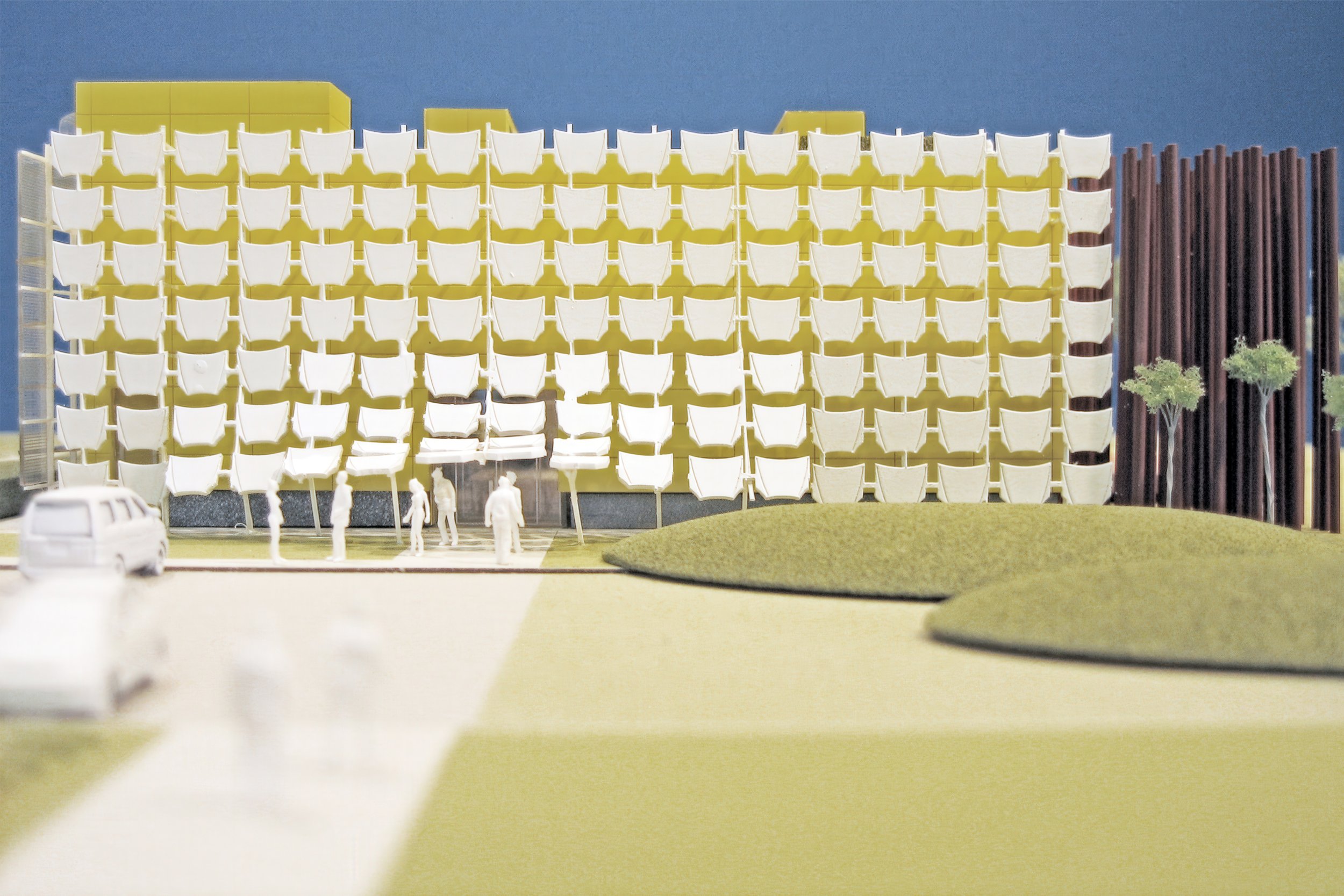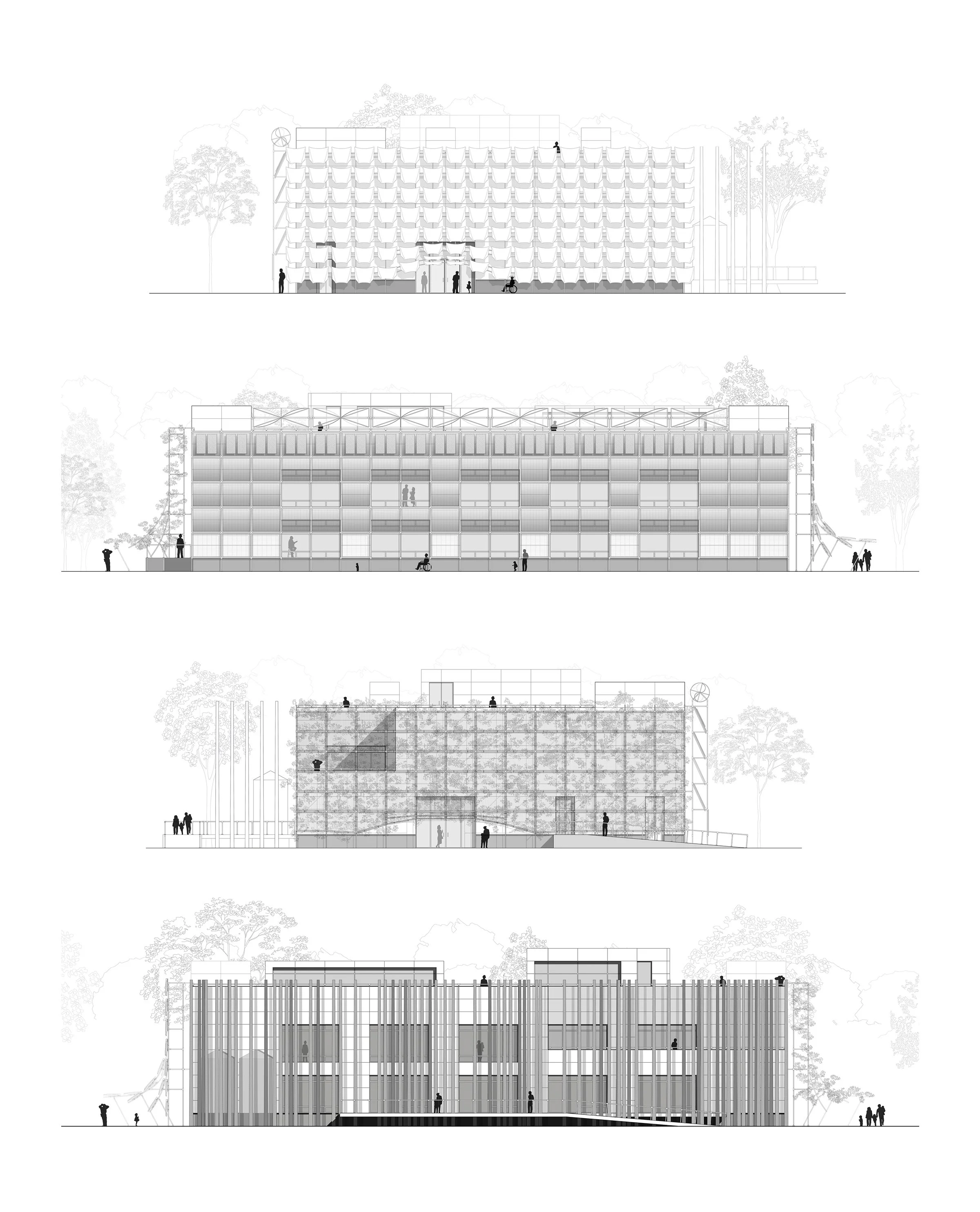DATA
+
–
Ecology of Foreign Objects was conceived as an adaptive architecture that mediates between the natural and industrial ecologies of Chicago’s Calumet region. Positioned between a biologically sensitive marshland and the Ford Motor Company, the project embodies the tension and reciprocity of nature and artifice. Its design establishes the center as a “foreign object” in the landscape—one that gradually integrates into its surroundings through processes of adaptation and reuse.
The building’s hybrid envelope employs reclaimed materials, including car hoods repurposed as a brise-soleil, recycled utility poles, and endemic vines, which together create a protective skin that is both performative and symbolic. These layered systems restore ecological memory by dispersing native seeds from the rooftop and reintroducing vegetation into the disturbed landscape. The project’s sustainable strategies positioned it for LEED Platinum certification, foregrounding a commitment to ecological restoration alongside community engagement.
As a hub for environmental education, the center connects local residents, schools, and museums with the larger regional ecosystem. Its compact footprint and carefully sited form embody a balance between environmental stewardship and industrial heritage. By reimagining the byproducts of manufacturing as generative design elements, Ecology of Foreign Objects proposes an architecture of resilience, adaptation, and renewal.
For: City of Chicago and Ford Motor Company
Size / Scale / Area: 10,000 sf
Type: Environmental Center
Stage II Consultants: Mechanical Engineering: IBC Engineering Services, Fieena Zvenyach, Lev Zvenyach. Structural Engineer: Louis Shell Structures Renewable Energy Consultants: David Dwyer, Bill Becker, Robin Shulemann. Cost Estimation: The Meyne Company
Stage II Model Fabrication: Model Options
Stage II Production Team: Steven Kismohr, Siamak Moustoufi , Annie Mohaupt, Prince Ambooken, Colin Morgan, Angela Demma, Dan Roush, Kevin Stephens
Stage II Model Fabrication: Model Options
Competition Jury:
Ralph Johnson, Architect, Perkins and Will; Julie Bargmann, Landscape Architect, DIRT Studio; Marian Byrnes, Environmental Activist
Raymond Clark, Engineer, HOK; Laurie Hawkinson, Architect, Smith-Miller Hawkinson Architects; Brian MacKay-Lyons, Architect, MacKay-Lyon Sweetapple Architects; James Wescoat Jr., Landscape Architect; Donna Robertson, Architect and Dean at IIT's College of Architecture



